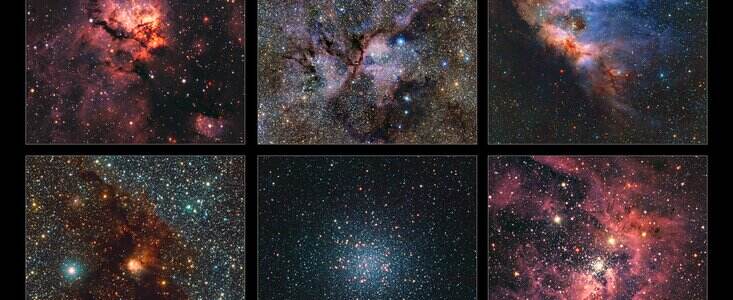THE LATEST
ESO's VISTA telescope captures unprecedented infrared map of the Milky Way

In a remarkable feat of celestial exploration, the European Southern Observatory (ESO) has unveiled the most detailed infrared map of our Milky Way. This map contains an astounding 1.5 billion celestial objects, and researchers are breaking new ground in the study of our galaxy.
Over 13 years, the ESO's VISTA telescope has generated a massive dataset, amounting to an impressive 500 terabytes. This groundbreaking observational project has broken previous records and advanced our comprehension of the universe.
"This is the largest observational project ever carried out with an ESO telescope," remarked Dante Minniti, the astrophysicist at Universidad Andrés Bello in Chile who spearheaded this groundbreaking initiative. The unveiling of this record-breaking map, a result of 200,000 images captured by VISTA, marks a monumental leap forward in astronomical research.
Peering through the cosmic veil of dust and gas that envelops our galaxy, VISTA's infrared camera has brought to light the hidden corners of the Milky Way - from the birthplaces of newborn stars to the enigmatic globular clusters that harbor millions of the galaxy's oldest denizens.
The magical tapestry of this dataset spans an area of the sky equivalent to 8600 full moons and includes approximately 10 times more objects than its 2012 predecessor. Observing the Milky Way's inner regions, previously concealed by cosmic dust, the team has revealed an accurate 3D portrayal of our galactic landscape.
This colossal effort was made possible by the collaborative spirit and unwavering dedication of the research team, including Roberto Saito from the Universidade Federal de Santa Catarina in Brazil, and numerous other dedicated scientists from around the world. Their combined efforts have ignited a scientific revolution, with the VISTA Variables in the Vía Láctea (VVV) survey and its companion project, the VVV eXtended (VVVX) survey, yielding over 300 scientific articles, paving the way for decades of continued exploration.
As this awe-inspiring venture draws to a close, the scientific community eagerly anticipates the myriad discoveries that the future holds. ESO's Paranal Observatory is gearing up for this next chapter, with plans to equip VISTA with the new instrument 4MOST and endow ESO's Very Large Telescope (VLT) with the MOONS instrument, promising to unveil countless cosmic secrets.
The unveiling of this colossal dataset, though too large to be released as a single image, stands as a symbol of humanity's enduring curiosity and unrelenting pursuit of knowledge. It embodies the triumph of human creativity, collaboration, and tenacity, serving as a testament to our boundless potential in unraveling the mysteries of the cosmos.
